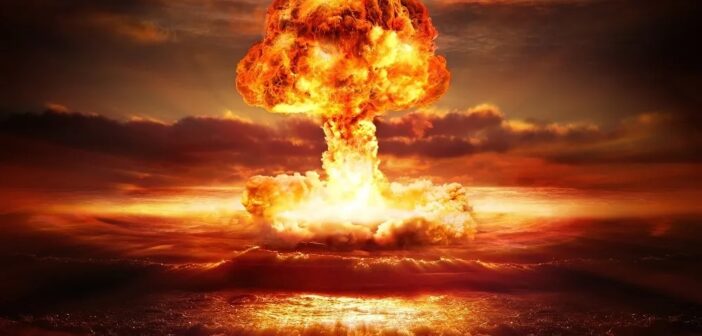Nuclear weapons have long been the focus of international efforts aimed at regulation, risk reduction, and transparency. In recent years, however, the nuclear landscape has continued to evolve, with some countries expanding their capabilities, others modifying their treaty commitments, and new technologies influencing strategic considerations. The SIPRI Yearbook 2025 warns of a deepening crisis in nuclear arms control as key treaties are eroding and technological advancements introduce new risks.
Nuclear weapons have long been the focus of international efforts aimed at regulation, risk reduction, and transparency. Recent developments in the Middle East, especially the ongoing conflict involving Israel and Iran, have brought renewed public attention to the risks associated with nuclear capabilities. Several key treaties and agreements have played a pivotal role in shaping the global nuclear landscape, each targeting different aspects of nuclear weapons such as non-proliferation, arms reduction, and disarmament.
In recent years, however, the nuclear landscape has continued to evolve, with some countries expanding their capabilities, others modifying their treaty commitments, and new technologies influencing strategic considerations. Amid these developments, questions persist about the role and effectiveness of existing agreements. This article provides an overview of the key international frameworks that govern nuclear weapons. We also look at the available data on the nuclear warhead counts and spending in the nine nuclear-armed states.
Major Treaties Governing Nuclear Weapons
- Treaty on the Non-Proliferation of Nuclear Weapons (NPT), which entered into force in 1970, is the most widely supported treaty on nuclear weapons, with 191 States Parties. It rests on three pillars: preventing the spread of nuclear weapons (non-proliferation), promoting disarmament, and supporting the peaceful use of nuclear energy. The treaty recognises five nuclear-weapon states. These are the United States, Russia, China, France, and the United Kingdom, and require all others to forgo developing or acquiring such weapons. The NPT includes a verification mechanism through safeguards agreements overseen by the International Atomic Energy Agency (IAEA).
- The New Strategic Arms Reduction Treaty, also known as the New START Treaty is a bilateral agreement between the United States and the Russian Federation, which entered into force in 2011 and is valid until 2026. It limits each side to 1,550 deployed strategic nuclear warheads and includes verification provisions such as data exchanges and on-site inspections. As of 01 March 2023, the United States had 1,419 deployed warheads on 662 missiles and bombers, according to the State Department. Russia suspended participation in the treaty in 2023. In 2024, the United States stated that it would continue to observe the treaty’s limits as long as it assesses that Russia is doing the same.
New START builds on earlier arms control efforts. The START I Treaty, signed in 1991 between the United States and the Soviet Union, was the first to mandate actual reductions in deployed strategic warheads. It expired in 2009, paving the way for New START. START II, signed in 1993, never entered into force but influenced subsequent negotiations.
- The Treaty on the Prohibition of Nuclear Weapons (TPNW) was adopted in 2017 and entered into force in 2021. The TPNW is the first legally binding international agreement to comprehensively ban nuclear weapons, including their development, testing, possession, and use. About 73 countries are parties to the treaty, all of which are non-nuclear-weapon states. None of the nuclear-armed states are party to the TPNW, and some have explicitly stated that they do not recognise the treaty’s authority.
- The Partial Test Ban Treaty (PTBT), signed in 1963, prohibits nuclear tests in the atmosphere, underwater, and outer space, but allows them underground. It was negotiated following concerns about radioactive fallout from above-ground testing and served as a foundation for later treaties focused on more comprehensive test bans. It was later superseded by the Comprehensive Nuclear-Test-Ban Treaty (CTBT).
- CTBT was adopted in 1996. It aims to ban all nuclear explosions for both civilian and military purposes. Although 187 states have signed, the treaty has not entered into force because it requires ratification by 44 specific countries involved in nuclear technology at the time of drafting. Eight of these countries, including the United States, China, India, Pakistan, and Israel, have not ratified the treaty.
Nuclear-armed states continue to modernize their nuclear arsenals
Despite the existence of international treaties aimed at limiting nuclear weapons, all the nine nuclear-armed states, viz; the United States, Russia, the United Kingdom, France, China, India, Pakistan, North Korea, and Israel, continued to modernize their nuclear arsenals in 2024, according to the Stockholm International Peace Research Institute (SIPRI). Further, some of these states also deployed new nuclear-armed or nuclear-capable systems during the year.
About 90% of the nuclear weapons are possessed by the United States and Russia
According to SIPRI’s estimates, there were an estimated 12,241 nuclear warheads worldwide as of January 2025. About 9,600 were in military stockpiles and could be used if needed. Around 3,900 were already placed on missiles or aircraft, and nearly 2,100 of those were kept on high alert, mostly by the United States and Russia. China may also have kept some warheads ready for use during peacetime. Since the Cold War, the total number of warheads has been going down due to dismantling, but this trend may reverse soon, as new weapons are being deployed faster than old ones are being dismantled.
In the chart below, the term military stockpile refers to both deployed warheads and those kept in storage that could be used if needed. Retired warheads are those removed from service but not yet dismantled, and only the United States and Russia possess such warheads.
The United States accounted for more than 50% of the total global spending on nuclear weapons between 2020 and 2024
The International Campaign to Abolish Nuclear Weapons (ICAN), awarded the Nobel Peace Prize in 2017, reports that the world’s nine nuclear-armed countries spent an estimated $415.9 billion on nuclear weapons between 2020 and 2024. In 2024 alone, spending reached $100.2 billion, an increase of $9.9 billion (11%) from the previous year, which is equivalent to about $3,169 spent per second.
The United States accounted for the largest share at $233.6 billion, followed by China ($54.9 billion), the United Kingdom ($37.8 billion), and Russia ($35.7 billion). Other nuclear-armed states, including France, India, Pakistan, Israel, and North Korea, also made substantial investments.
India spent 3% of its total military budget on nuclear weapons between 2020 and 2024
India spent an estimated $11.9 billion on nuclear weapons between 2020 and 2024. According to SIPRI’s data on country-wise military expenditure, this accounted for about 3% of India’s total military spending during the period. In comparison, France allocated around 11%, China about 4%, and the United States approximately 6% of their respective military budgets to nuclear weapons.
The SIPRI Yearbook 2025 warns of a deepening crisis in nuclear arms control as key treaties are eroding and technological advancements introduce new risks. With New START set to expire in 2026 and no replacement in sight, the future of strategic arms limitation between the United States and Russia is uncertain. SIPRI notes that developments in artificial intelligence, cyber capabilities, and quantum technology are reshaping nuclear deterrence and may increase the risk of miscalculation or unintended escalation. Regional dynamics are also shifting, with national debates in East Asia, Europe, and the Middle East indicating a potential interest in developing or hosting nuclear weapons.



